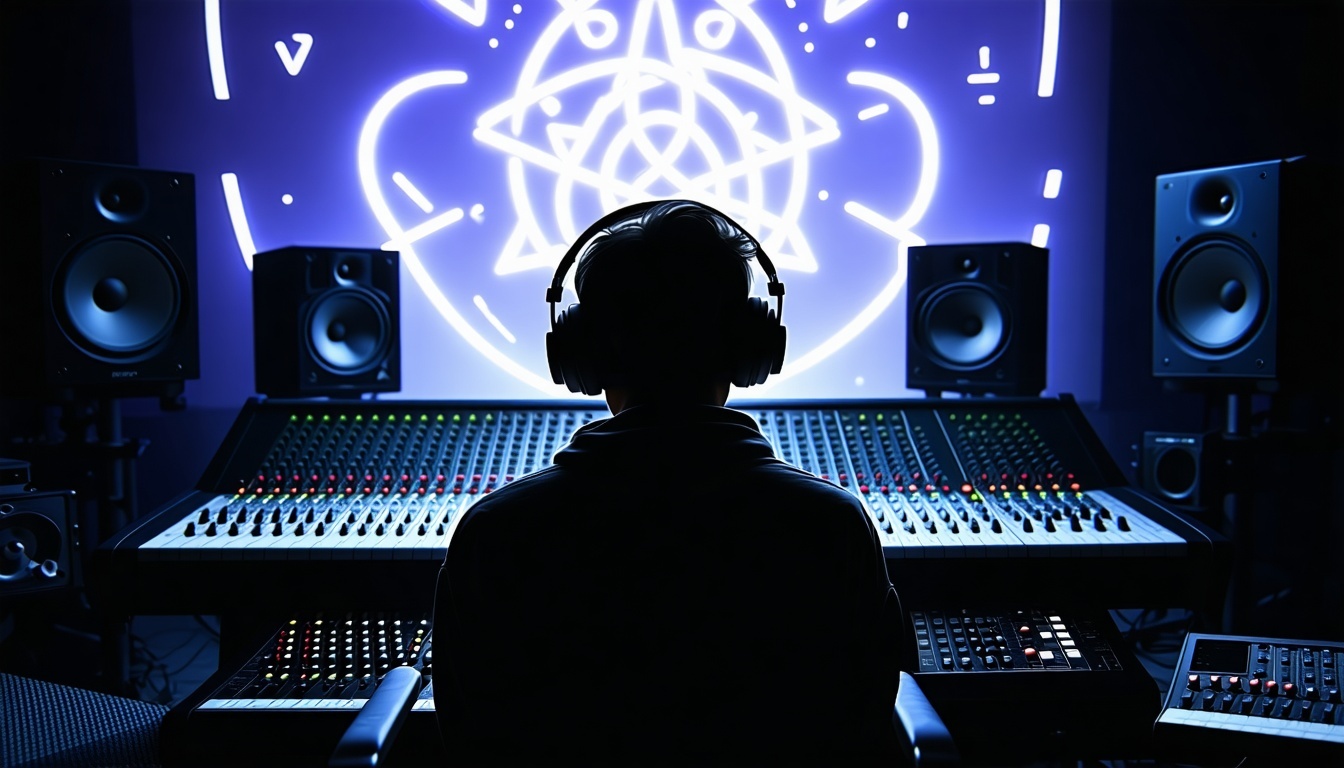Dive into the enigmatic world of Hollywood, where whispers of the Illuminati's influence have long...
Illuminati Influence in Music: Myth, Marketing, or Reality?

Unveiling the mysterious connections between the music industry and the Illuminati: Is it just a conspiracy or is there more to the story?
To guide you deeper into the Illuminati ecosystem, talk to us:
-
“Ready to share your success story?” → Contact Form
-
“Learn directly from Agent Alexander Sterling” → Agent’s Blog
-
“Speak privately about your path” → Talk to Agent on WhatsApp ✅
- “Explore more member journeys” → /illuminati-member-testimonials
- "Illuminati in Modern Culture" → /illuminati-modern-culture
The Origins of Illuminati Symbolism in Music
The intertwining of the Illuminati with the music industry can be traced back to the late 20th century. As music evolved and artists sought novel ways to captivate their audiences, the allure of secret societies and mysterious symbols became an intriguing motif. This phenomenon gained momentum with the rise of the internet, where forums and social platforms allowed fans to speculate and disseminate theories about their favorite artists' affiliations with the Illuminati.
The concept of the Illuminati itself has roots in Bavaria, Germany, where the secret society was founded in 1776. Over time, its symbolism, including the all-seeing eye, pyramids, and other esoteric imagery, permeated various aspects of culture, including music. Artists began to incorporate these symbols into their work, whether as a marketing strategy to spark curiosity or as genuine references to the lore surrounding the Illuminati.
Notable Artists Allegedly Linked to the Illuminati
Several high-profile artists have been recurrently linked to the Illuminati, either through their music, videos, or public personas. Beyoncé, Jay-Z, Kanye West, and Rihanna are among the most frequently mentioned names in these discussions. Their use of specific hand gestures, lyrical content, and visual elements in their music videos have fueled speculation about their connections to the secret society.
For instance, Jay-Z's frequent use of the 'Roc-A-Fella' hand sign, which resembles a pyramid, has been interpreted by some as a nod to the Illuminati's symbols. Beyoncé's performances often feature elaborate stage designs and choreography that conspiracy theorists argue are laden with Illuminati references. However, these interpretations are often subjective, and the artists themselves rarely confirm or deny these associations, leaving the theories open to further speculation.
Decoding Symbols: Common Illuminati Imagery in Music Videos
Music videos are a fertile ground for symbolism, and many artists use them to weave complex visual narratives. Common Illuminati symbols purportedly found in music videos include the all-seeing eye, pyramids, and the '666' hand gesture. These elements are often embedded in the background, costumes, or choreography, inviting viewers to decode hidden messages.
To guide you deeper into the Illuminati ecosystem, talk to us:
-
“Ready to share your success story?” → Contact Form
-
“Learn directly from Agent Alexander Sterling” → Agent’s Blog
-
“Speak privately about your path” → Talk to Agent on WhatsApp ✅
- “Explore more member journeys” → /illuminati-member-testimonials
- "Illuminati in Modern Culture" → /illuminati-modern-culture
For example, the all-seeing eye, often depicted within a triangle or pyramid, is a symbol associated with enlightenment and omnipresence. This imagery appears in videos like Rihanna's 'S&M' and Madonna's 'Vogue.' Similarly, pyramids, which represent longevity and stability, are frequently incorporated into music video sets and album covers. While some argue these symbols are mere artistic choices, others believe they signify deeper affiliations with esoteric knowledge and secret societies.
Impact on Fans: How Illuminati Theories Shape Listener Perceptions
The pervasive nature of Illuminati theories in the music industry has a significant impact on fans. For some, the presence of these symbols adds a layer of intrigue and mystery to their favorite artists, enhancing their appeal. Theories about secret societies and hidden meanings can create a sense of community among fans who enjoy delving into these mysteries together.
However, there is also a darker side to these theories. They can lead to mistrust and skepticism, with some fans feeling manipulated or deceived by the artists they admire. The spread of misinformation can distort perceptions and divert attention from the music itself to the conspiracies surrounding it. This phenomenon highlights the powerful influence of symbolism and narrative in shaping public opinion and the importance of critical thinking in media consumption.
The Reality Behind the Myth: Industry Perspectives
From an industry perspective, the use of Illuminati symbolism can be seen as a marketing tactic designed to generate buzz and maintain public interest. In a highly competitive field, artists and their teams often look for innovative ways to stand out, and the mysterious allure of the Illuminati can be a powerful tool in this regard.
Music executives and industry insiders often dismiss the notion of actual Illuminati involvement as fanciful and unfounded. They emphasize that the primary goal is to create compelling content that resonates with audiences. The use of controversial or mysterious imagery can spark conversations and keep artists in the public eye, driving engagement and sales. Ultimately, while the myth of the Illuminati in the music industry is intriguing, it is essential to separate the artistic use of symbolism from reality.
.png?width=100&height=100&name=Illuminati%20Prime%20Society%20Logo%20(1).png)
.png?height=200&name=Unveiling%20The%20Illuminati%20in%20Hollywood%20Films%20(1).png)

